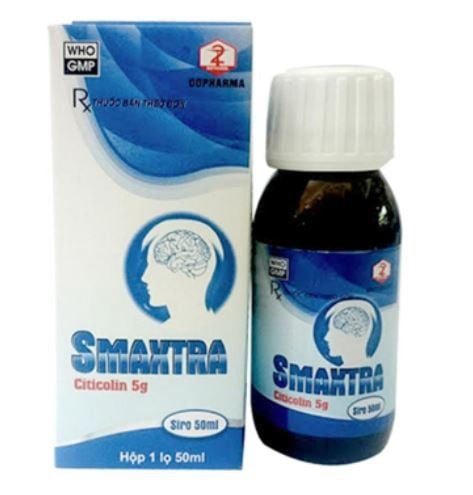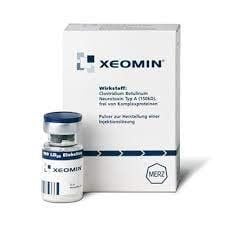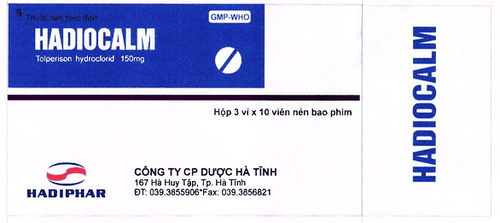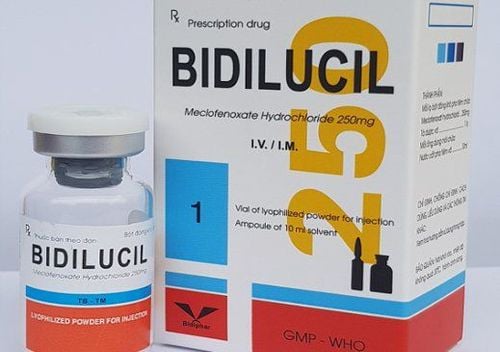This is an automatically translated article.
The article is expertly advised by MSc. Dr. Nguyen Minh Tuan - Pediatrician at the Department of Pediatrics - Neonatology - Vinmec Danang International General HospitalMovement disorders in children occur as a result of structural damage to the brain following trauma, disease, metabolic or genetic disorders. The disease can get worse and become chronic if not treated promptly.
1. What is a movement disorder?
A movement disorder is a disorder that can result from a brain injury, such as a head injury, infection, inflammation, metabolic disorder, toxins, or unintended side effects of medications. The disease can also be a symptom of an existing medical condition including a genetic disorder.Brain structures affected include the basal ganglia, motor parts of the cerebral cortex, thalamus, cerebellum, and/or brain stem. All of these structures are thought to be closely interrelated, so damage to just one is sufficient to cause dyskinesia.
Treatment of movement disorders often focuses on correcting the underlying cause. The extent to which a child recovers depends on the type of movement disorder, the cause of the movement disorder, and the stage of treatment.
For example, a child with primary dystonia can live a normal life if treated early, while undiagnosed dystonia and untreated for many years can become a chronic disease. Other movement disorders such as tic disorders may also resolve on their own or become much milder after treatment.
For movement disorders that are part of a serious genetic or degenerative disorder, there may be no treatment. However, in most cases, there are interventions that can significantly reduce symptoms of the disease.

Rối loạn vận động ở trẻ em xảy ra do cấu trúc não bị tổn thương sau sang chấn, bệnh tật, rối loạn chuyển hóa hoặc di truyền
2. Classification of movement disorders
Types of movement disorders include:2.1 Chorea (Chorea) Chorea is a symptom of nerve damage, not an underlying disease. Children with chorea have irregular movements, which are sometimes described as dancing-like. Movements can be slow and writhing (athetosis) or more forceful (ballismus). If chorea affects the legs, the child may stumble frequently and have difficulty walking, but rarely falls.
Chorea in children can be caused by brain injury at birth, head trauma, infection, inflammation, or a toxic reaction to medication. In some cases, it may have a genetic cause. Specific types of chorea include:
Syndenham chorea: The disease, also known as rheumatoid encephalitis, is a short-lived, autoimmune form of chorea that can occur as a result of a strep infection. group A. Huntington's disease: A very rare genetic form in children. Chorea from genetic causes: Some genetic disorders, such as the NKX2.1 mutation, may occur on their own or as part of a larger spectrum of neurological or other symptoms. 2.2 Run (Tremor) Tremor may manifest as a generalized tremor or a localized tremor of a limb. It can also occur as a complication of an underlying disease or head injury, as a side effect of medication, or as a result of an inherited disease. Tremors may occur at rest or during movement, may occur alone or be accompanied by other neurological symptoms such as limb weakness and difficulty in fine-tuning movements. Tremor is sometimes also genetic.
Runs are sometimes just a temporary part of a child's motor development; In other cases, it can be long-lasting. Unlike most other movement disorders, children can sometimes consciously inhibit tremors.
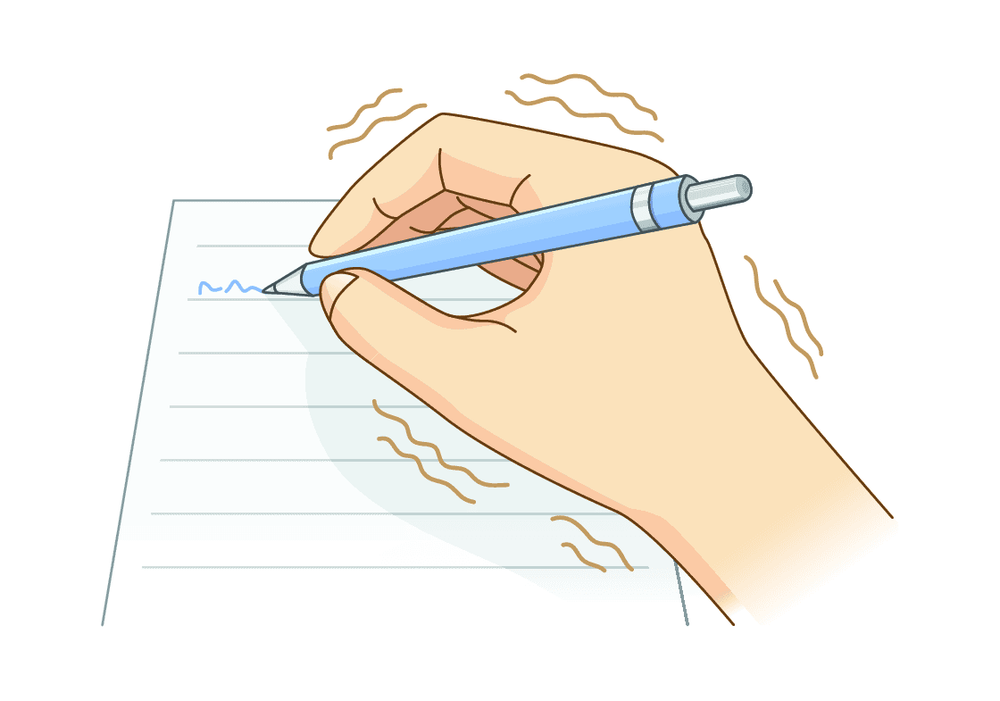
Run có thể biểu hiện run rẩy toàn thân hoặc run rẩy cục bộ như ở một chi
Myoclonus is usually a benign condition with no long-term effects on a child's health, but it is important to be evaluated by a movement disorder specialist to determine the type of myoclonus and its cause.
Myoclonus can occur after a severe brain injury, or it can be due to a metabolic disorder or neurodegenerative disease. It can also be part of a seizure disorder called myoclonic epilepsy.
2.4 Dystonia In children with dystonia, faulty brain signals cause groups of muscles to contract abnormally. Instead of contracting in a coordinated fashion, the muscles can contract against each other.
Dystonia often occurs with specific actions, such as writing or walking, but can also occur when the child is resting. Symptoms usually start in one part of the body, such as the hands, feet, or mouth, and then spread to other areas of the body.
Primary dystonia is thought to be hereditary. Children with primary dystonia have no associated neurological disorders. Primary dystonia tends to progress and spread most rapidly during the first 5 years after onset, and then begins to stabilize. Most children with primary dystonia have a normal life expectancy, but dystonia can severely limit a child's movement if left untreated.
Secondary dystonia, the most common form of dystonia in children, is the result of brain injury (during birth, due to stroke, trauma, inherited degenerative syndromes, or metabolic disorders). The severity and symptoms of secondary dystonia vary depending on the cause. Secondary dystonia often occurs with spasticity, and 5 to 15% of children with cerebral palsy also have dystonia.
2.5 Tic disorders/Tourette Tics are sudden, involuntary movements or sounds that come and go over time. They are quite common in children and can usually be treated by a pediatrician. Muscle tics can involve any part of the body and can vary in severity, from very mild and barely noticeable to very sudden, frequent, and severe.
If a child has both speech and motor problems lasting more than a year, they are considered to have Tourette syndrome. Many children with Tourette syndrome also have attention deficit hyperactivity disorder (ADHD), obsessive-compulsive disorder (OCD), or learning disorder, which can be evaluated and treated by a neurologist or doctor. Pediatrics.
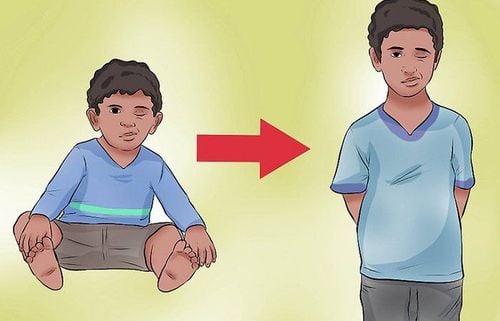
Tics là những chuyển động đột ngột, không tự chủ hoặc âm thanh đến và đi theo thời gian
Parkinson's disease can also result from genetic diseases that cause brain degeneration, such as Wilson's disease, juvenile Huntington's disease, and lysosomal disorders, and from various forms of brain injury.
2.7 Ataxia Ataxia is a decrease in motor coordination caused by injury or dysfunction of the cerebellum. Its symptoms are clumsiness, poor balance, irregularity of movement, and inability to perform fine or smooth movements.
Ataxia may have different models. Some cases begin suddenly, due to stroke or bleeding in the brain, inflammation or infection, and usually resolve when these causes are treated. Other types of ataxia constantly come and go, and are caused by epilepsy, genetic mutations, metabolic disorders, or atypical types of migraine. There are also progressive forms of ataxia caused by various genetic conditions known as spinocerebellar ataxias.
2.8 Neurological dysfunction/conversion disorder Neurological symptom disorder is also known as conversion disorder. Dysfunction can also occur in children with other neurological diagnoses and make existing movement disorders worse. Most children recover from this movement disorder with training from physical therapists and continued supportive care from a neurologist. In some cases, children may benefit from care with a psychologist or psychiatrist.
3. Diagnosis of movement disorders
The causes of movement disorders are varied, and the tests used to diagnose these disorders can also vary. These may include:Genetic tests Metabolic tests MRI imaging tests Electroencephalogram (EEG) to evaluate a child for seizures
4. Treatment of movement disorders

Có thể sử dụng thuốc để điều trị rối loạn vận động
Oral medications to relax muscles and reduce tremors and spasms Botulinum toxin (Botox) injections for movement disorders affecting one myoclonus, tic disorders and myoclonus Dopamine (levodopa) for parkinsonism Baclofen implantation may be useful for dystonia associated with spasticity that does not improve with oral medication Deep brain stimulation is a treatment for dystonia that does not respond to medication alone Some children with movement disorders may also use other methods:
Physical therapy to strengthen or stretch affected limbs and muscles Influence Occupational therapy to help overcome limitations caused by abnormal movements. Support to help families and children cope with ongoing movement disorder symptoms Neurological testing when dyskinesia is accompanied by cognitive or behavioral problems Article references sources: webmd.com, ncbi.nlm.nih.gov, childrenshospital.org





